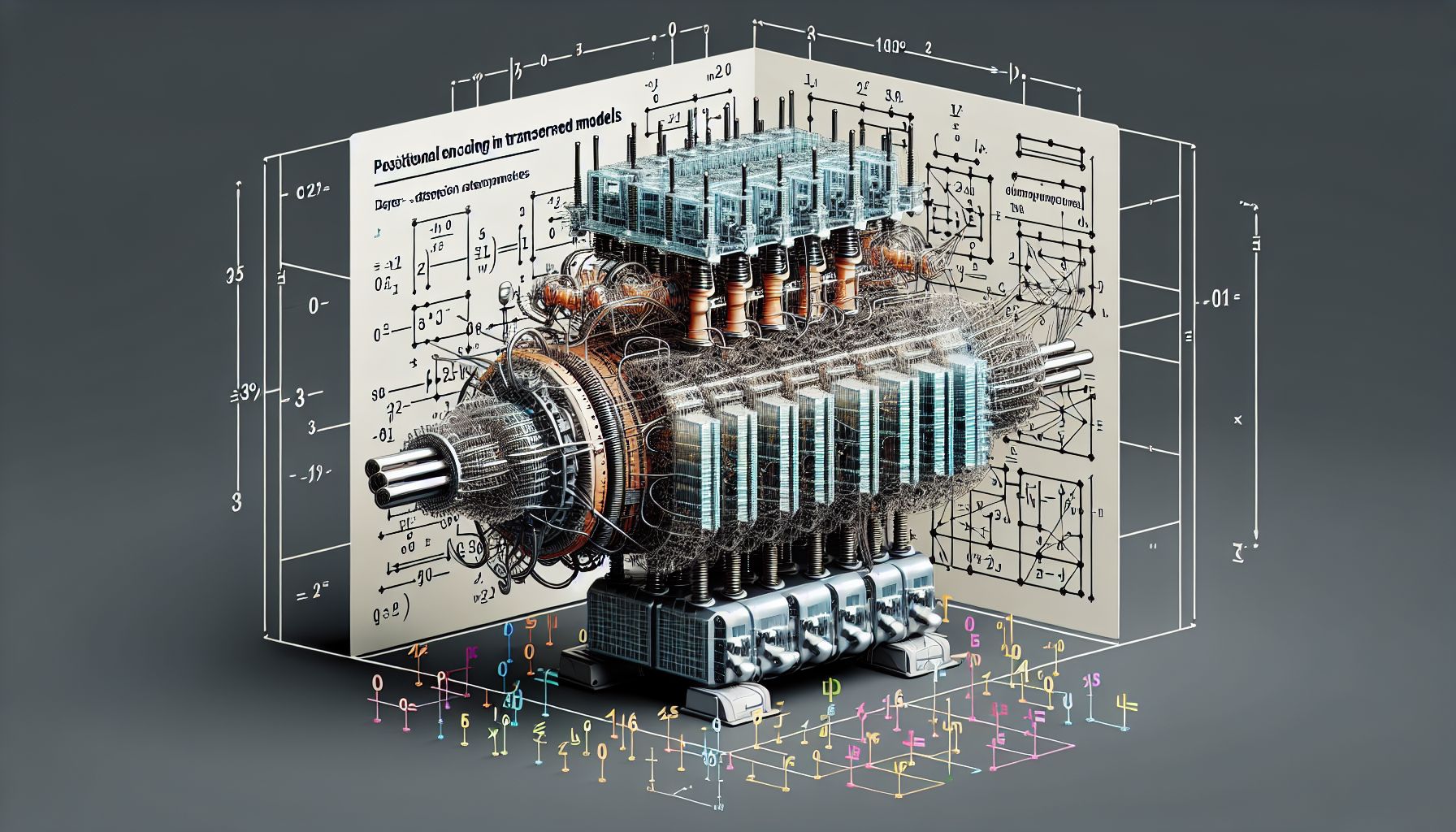📌 Let’s explore the topic in depth and see what insights we can uncover.
⚡ “Unlock the secrets behind the magic of transformer-based models because trust us, it’s not all smoke and mirrors. Let us demystify the concept of positional encoding and reveal how it’s the hidden hero in language understanding!”
Have you ever wondered how machine learning models are able to understand and process sequential data? How do they know that “I ate an apple” is different from “an apple ate I”? This is all thanks to a little magic trick called positional encoding! 🎩✨ In this blog post, we’re going to delve deep into the world of transformers, no, not the cars-that-turn-into-robots kind, but the equally awesome transformer-based models in natural language processing (NLP). We’ll specifically take a close look at one of the most vital and intriguing components—positional encoding. So, buckle up, get your caffeinated beverage of choice, and let’s embark on this exciting journey through the intricacies of machine learning models. 🚀
📍 What is Positional Encoding?

"Unlocking the Code: Positional Encoding in Transformers"
To kick things off, let’s first understand what positional encoding is. In the realm of NLP, it’s crucial for a model to recognize the position of each word in a sentence. 🔍 Interestingly, because the meaning of the sentence can change dramatically based on the order of the words. 🔍 Interestingly, where positional encoding comes into play. It provides a way for transformer-based models to respect the sequence of the words, despite not inherently having a sense of order. It’s like giving a compass to a hiker lost in the woods. Without it, the model would just wander aimlessly, not understanding the importance of the sequence of the words. In essence, positional encoding is a vector that is added to the input embeddings for the transformer. The embeddings represent the input words, and the positional encodings are a way of representing the position of the words in the sentence.
🧠 How Does Positional Encoding Work?
Now that we have a basic understanding of positional encoding, let’s take a deep dive into the mechanics of how it works. The original transformer paper by Vaswani et al., introduced a specific kind of positional encoding, known as sinusoidal positional encoding. It uses sine and cosine functions of different frequencies to encode the positions.
The positional encoding for a position ‘pos’ in a ‘d’-dimensional space is calculated as:
### PE(pos, 2i) = sin(pos / 10000^(2i/d))
### PE(pos, 2i+1) = cos(pos / 10000^(2i/d))
In this formula, pos refers to the position of the word in the sentence, and i refers to the dimension. The intuition behind this formula is that these functions provide a unique and continuous encoding for each position, and the model can easily learn to attend to these positions.
The beauty of this method is that the positional encodings are the same regardless of the length of the sentence, and it allows the model to generalize beyond the sequence length it was trained on.
🚀 Positional Encoding In TensorFlow
Now that we understand the concept and working of positional encoding, let’s put it into practice. We’ll be using TensorFlow to implement positional encoding. Here’s a simple Python function to calculate positional encoding:
import numpy as np
import tensorflow as tf
def positional_encoding(position, d_model):
angle_rads = get_angles(np.arange(position)[:, np.newaxis],
np.arange(d_model)[np.newaxis, :],
d_model)
# Apply sin to even indices in the array
angle_rads[:, 0::2] = np.sin(angle_rads[:, 0::2])
# Apply cos to odd indices in the array
angle_rads[:, 1::2] = np.cos(angle_rads[:, 1::2])
pos_encoding = angle_rads[np.newaxis, ...]
return tf.cast(pos_encoding, dtype=tf.float32)
def get_angles(pos, i, d_model):
angle_rates = 1 / np.power(10000, (2 * (i//2)) / np.float32(d_model))
return pos * angle_rates
This script begins by calculating the angles for the positional encoding. We then apply the sine function to even indices and the cosine function to odd indices in the array. Finally, we cast the positional encoding to tf.float32 format.
🖥️ Applications of Positional Encoding
Positional encoding is a vital component of transformer-based models which has proven to be extremely effective in many NLP tasks like translation, summarization, and sentiment analysis. * Translation: In translation tasks, the order of words is paramount. For instance, the phrases “Je t’aime” in French and “I love you” in English have the same meaning but different word orders. Positional encoding helps the model understand this order and translate accurately. * Summarization: Summarizing a text involves understanding the main points and their sequence. Positional encoding provides the necessary context to the model. * Sentiment Analysis: The sentiment of a sentence can change dramatically with the order of words. For example, “I love dogs, not cats” vs. “I love cats, not dogs”. Positional encoding helps the model capture these nuances.
🧭 Conclusion
In this post, we’ve taken a deep dive into the world of positional encoding in transformer-based models. We’ve seen how it provides a sense of order to the models, enabling them to process sequential data more accurately. We’ve also learned how it works, how to implement it using TensorFlow, and some of its applications. Positional encoding is like the secret sauce that makes transformer-based models so effective in handling sequence data. It might seem complex at first, but once you understand the concept and its implementation, it’s quite straightforward. So, keep exploring, keep learning, and remember, in the world of AI and machine learning, position matters! 💼🚀
🚀 Curious about the future? Stick around for more discoveries ahead!
